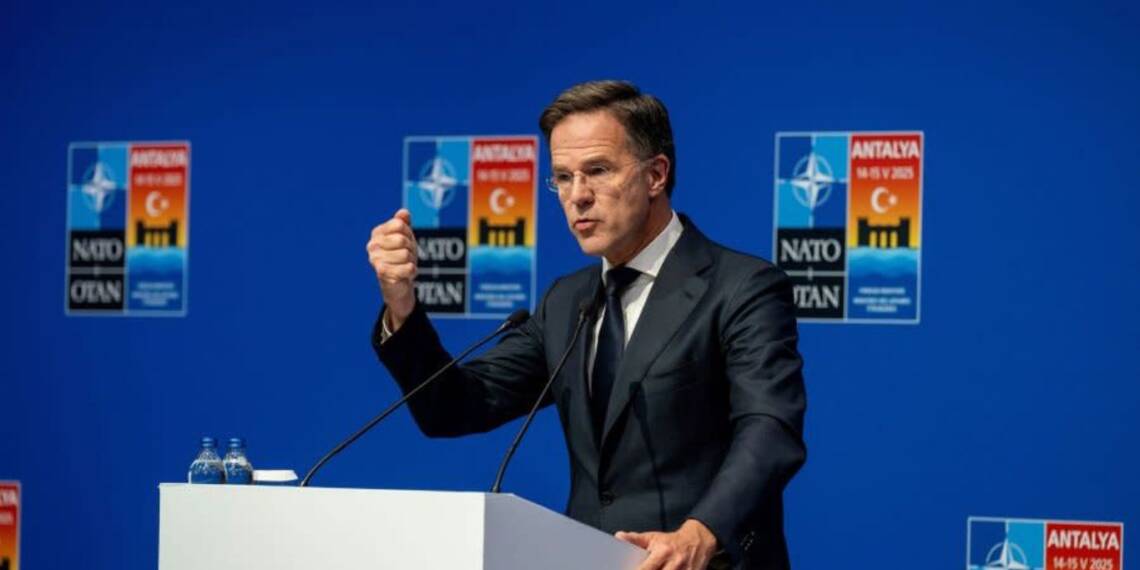In the upcoming NATO summit in June, NATO Secretary General Mark Rutte confirmed the alliance would seek to adopt a new defence spending target of 5% of GDP. The demand that has long been raised by US President Donald Trump seemed unrealistic.
During a televised question and answer session at the NATO parliamentary assembly in the US, Secretary Rutte said, “I assume that in The Hague, we will agree on a higher defence spending target of in total 5%.”
This is the first time that NATO Secretary General Mark Rutte has publicly endorsed the target of 5 %. The proposal includes a 3.5% target for hard defence spending and an extra 1.5% for defence-related outlays such as infrastructure for military mobility. Rutte did not confirm the specifics; however, he said the target for hard defence spending would be “considerably north of 3%.”
According to Dutch Prime Minister Dick Schoof, the number proposed by the secretary-general is a positive step towards reaching the aimed number.
Trump’s Idea
Earlier this year, President Trump threatened to pull out of the alliance or to protect the specific allies that spent enough on the defence budget. Trump also demanded that allies spend 5% of their GDP on defence if they were NATO allies.
At first, the figure looked unrealistic, but European allies and Canada started to understand the requirement of increasing their defence spending. The situation of world politics has changed, and no single country has the reach or capabilities to protect its allies. The power centres have increased, and several nations have started positioning themselves at the centre of international politics. Anarchy was there before, but the chaos has increased these days since the US was the sole power that used to act as a binding force due to its power and capabilities, but now it no longer holds it. It means nations have to increase their capabilities to defend themselves in times of conflict.
More Fragile World
As a result, not only are NATO countries considering increasing their defence budget, but other nations around the world are also considering boosting their defence spending. According to the Stockholm International Peace Research Institute, World military expenditure reached $2718 billion in 2024, an increase of 9.4 per cent in real terms from 2023 and the steepest year-on-year rise since at least the end of the Cold War. Military spending increased in all world regions, with particularly rapid growth in both Europe and West Asia.
As of now, only 23 out of 32 allies have reached the current spending target of 2%, according to NATO’s annual report published in April. But all of them are expected to meet it by the summer. If the decision to increase the defence budget is passed in the meeting, it will further increase overall defence spending around the world and make the world more volatile.
What is NATO?
NATO, is known as the North Atlantic Treaty Organization, is a military alliance of 32 European and North American countries. The idea of the organization is based on the concept of Collective Security, which means “an attack on one member state is considered an attack on all.”
NATO headquarters is situated in Brussels, Belgium, and its primary goal is to protect the security and freedom of its member states, both through political and military means.
In recent decades, the conflict between Russia and NATO has intensified due to the unjustified expansion of NATO towards the Russian sphere of influence, especially near the Russian borders. Several analysts think that the expansion has caused the Russia-Ukraine war. The US, under Donald Trump, has pushed the idea of increasing the defence budget of the member states to cut American money.








